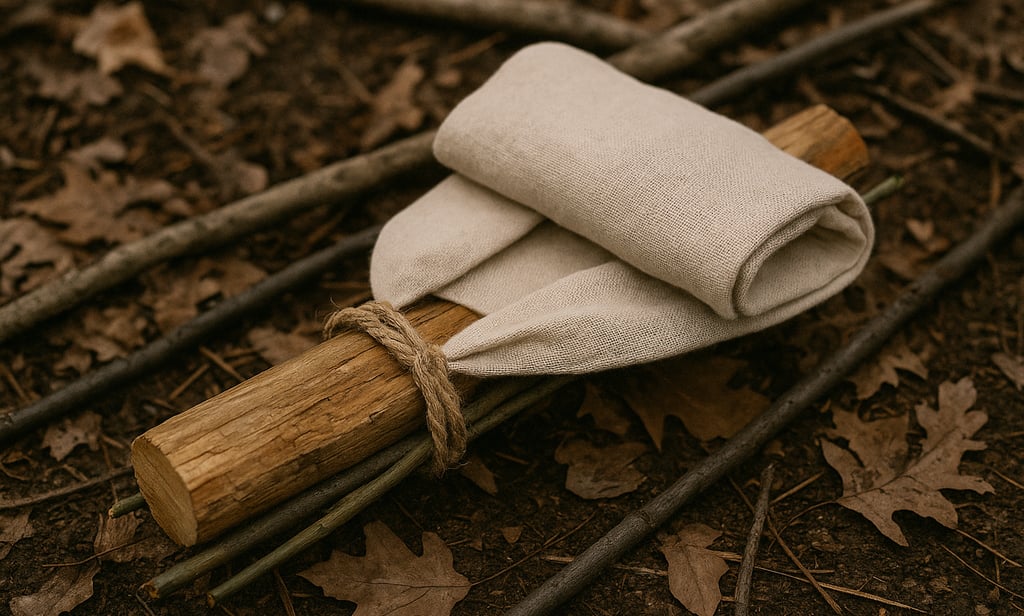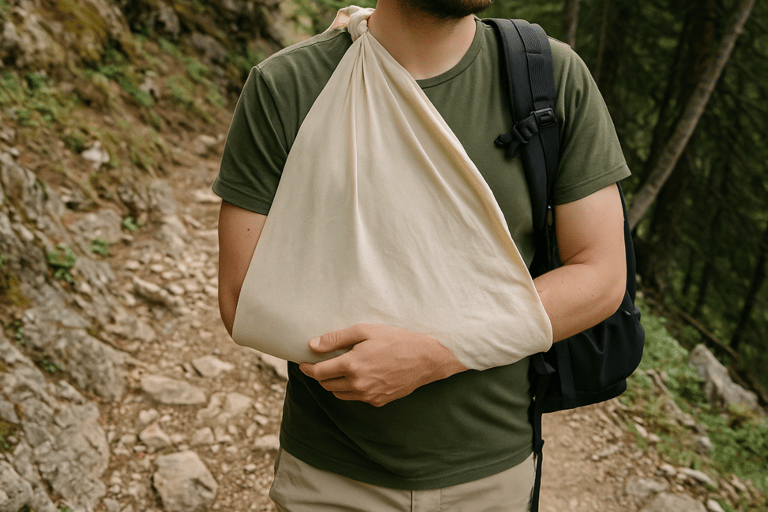How to Make a Wilderness Splint or Sling Using Natural Materials
Learn how to make a splint or sling using natural materials in a survival situation. This beginner-friendly guide covers essential wilderness first aid skills for stabilizing injuries when no medical gear is available.


How to Make a Wilderness Splint or Sling Using Natural Materials
When You Don’t Have Gear, Nature Can Help
In a remote setting, even a minor injury can become a serious issue if it’s not properly stabilized. That’s why knowing how to improvise a splint or sling with natural materials is one of the most valuable wilderness first aid skills you can have. Whether you're treating a sprained wrist, a broken arm, or a leg injury, the ability to immobilize the area can make a major difference — especially if you’re hours or days from help.
The good news? You don’t need a medical kit. With some basic guidance and what’s around you — sticks, clothing, rope, and even bark — you can craft a surprisingly effective support.
How to Make a Splint from Sticks and Cloth
If someone injures a limb and you suspect a fracture or need to prevent further movement, your goal is to keep the area immobilized. Start by finding two straight, rigid sticks longer than the injury site. These will act as supports. Ideally, you want them to extend beyond the joints above and below the injury.
Next, cushion the area using any soft material you have — think bandanas, spare clothes, or even moss or bark if you’re truly roughing it. Place the sticks on either side of the limb and secure them in place with strips of clothing, shoelaces, cord, or vines. Tie them snugly, but not so tight that you cut off circulation. This DIY splint helps reduce pain, prevent further injury, and allows the person to be moved more safely if necessary.
Learning to build a splint in the wild is just one part of basic wilderness first aid training, and it ties directly into managing more common wilderness injuries like fractures, sprains, and strains that happen far from medical help.
Making a Sling with Clothing or Natural Fibers
A sling is used to support an arm or shoulder injury. If you don’t have a triangle bandage or ready-made sling, a long-sleeve shirt, bandana, scarf, or even a piece of tarp can work well.
Fold the material into a triangle if possible. Place one end over the uninjured shoulder, let the middle support the injured arm, and tie the other end around the neck behind the injured side. The hand should rest slightly above the elbow to allow for proper support.
If no clothing is available, look for long grasses, inner tree bark strips, or flexible vines. Combine and braid them if needed to increase strength. Pad the neck area if the material is rough to avoid chafing or discomfort.
Improvising with What You Have Is a Survival Mindset
The key to wilderness medicine is creativity. You’re not looking for perfect solutions — you’re trying to prevent further harm and make the injured person stable enough for evacuation or recovery. A stick becomes a splint. A shirt becomes a sling. That kind of resourcefulness can turn a crisis into a manageable situation.
The most important thing is to stay calm, think clearly, and work with what you have. These techniques aren’t just useful in emergencies, they build confidence and readiness for anyone spending time outdoors.
For a broader understanding of how to respond to medical situations in remote areas, explore our beginner’s guide to wilderness first aid or learn the key differences between wilderness and standard first aid so you know what to expect when professional care isn’t close by.


© 2025. All rights reserved About | Privacy Policy | Terms and Conditions | Affiliate Disclosure | Disclaimer


